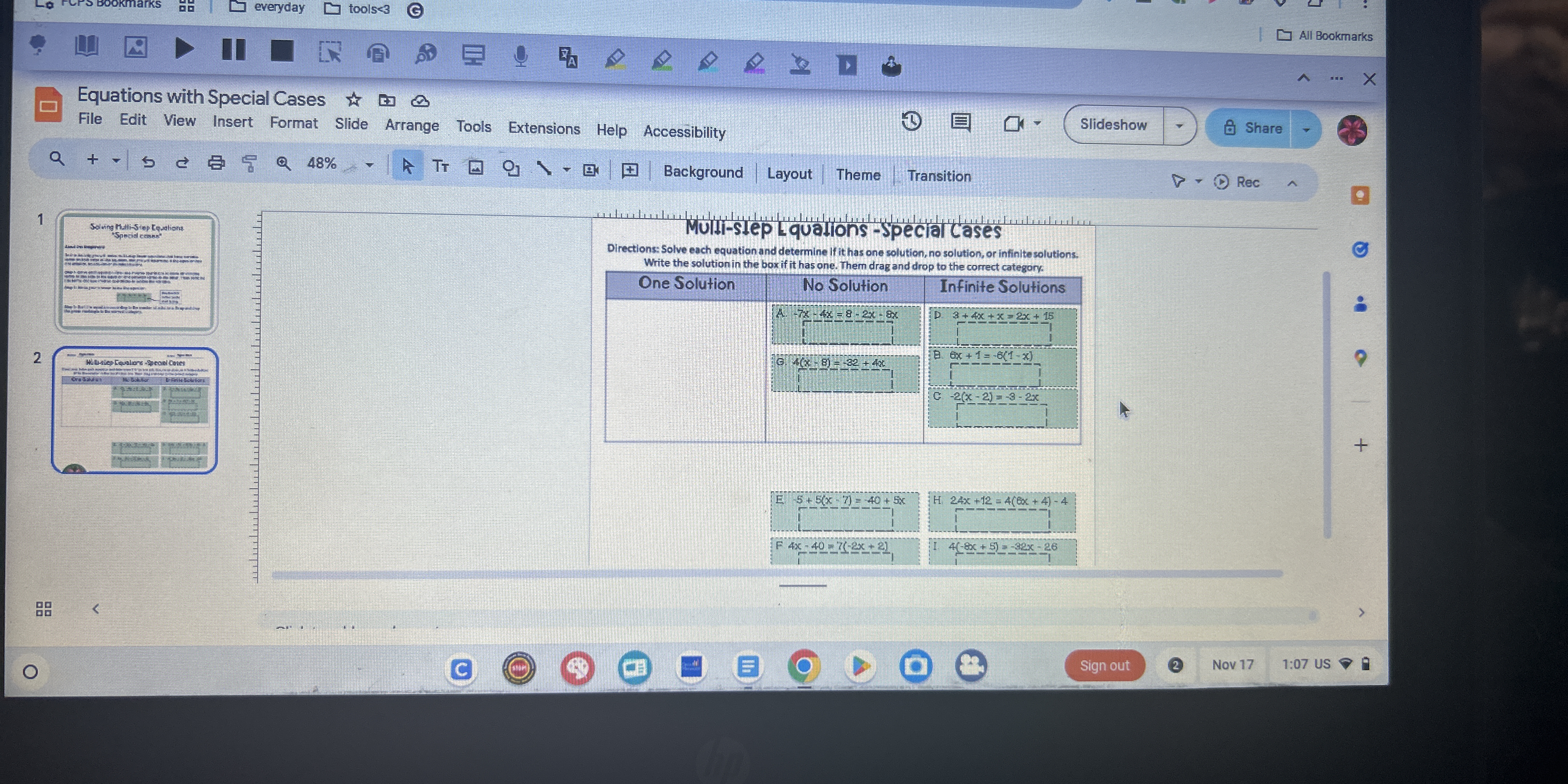How do I categorize these equations based on their number of solutions?

Understand the Problem
The image displays a worksheet focused on solving multi-step equations with special cases, asking to categorize each equation by the number of solutions it has (one solution, no solution, or infinite solutions).
Answer
Equations categorized as follows: - One Solution: A, C, D, G - No Solution: B, E, F - Infinite Solutions: H
Answer for screen readers
- Equations with One Solution: A, C, D, G
- Equations with No Solution: B, E, F
- Equations with Infinite Solutions: H
Steps to Solve
-
Identify the equations Look at each equation in the boxes provided (A to H) and write them down.
-
Simplify each equation For every equation, combine like terms and simplify both sides as much as possible to see if they can be categorized based on their solutions.
-
Determine the number of solutions Evaluate each simplified equation:
- One Solution: If the variables can be isolated to give a specific number (e.g., $x = 2$).
- No Solution: If the equation simplifies to a false statement (e.g., $0 = 5$).
- Infinite Solutions: If the equation simplifies to a true statement for all values (e.g., $0 = 0$).
-
Categorize the equations Place each equation into one of the three categories (One Solution, No Solution, Infinite Solutions) based on the results from the previous step.
-
Double-check and validate Review each categorized equation to ensure they meet the criteria for the respective categories.
- Equations with One Solution: A, C, D, G
- Equations with No Solution: B, E, F
- Equations with Infinite Solutions: H
More Information
In multi-step equations, identifying the nature of the solutions is crucial. One solution is a single value, no solution indicates a contradiction (like $0 = 5$), while infinite solutions imply the variables cancel out entirely to give a true statement.
Tips
- Not simplifying the equation fully before categorizing.
- Confusing "no solution" with "infinite solutions".
- Misidentifying where like terms can be combined or where terms can be canceled.
AI-generated content may contain errors. Please verify critical information